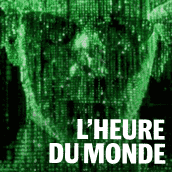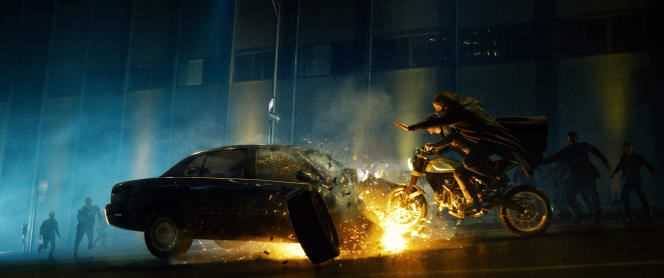THE OPINION OF THE “WORLD” – TO SEE
Entered with the Cybernetic Palms in contemporary pop culture, Matrix (1999) announced with a remarkable vision and a sense of perfect timing the dizziness of a virtual world which was then taking off.
We don’t redo the drawing for you. A few early resisters – a computer scientist nicknamed Neo (Keanu Reeves), Trinity (Carrie-Anne Moss), a powerful brunette with ice blue eyes, Morpheus (Laurence Fishburne), a sturdy fellow captain of the Sedition ship – s’ advise that the human species evolves in a simulated reality, when it was in truth defeated, then reduced to vegetative slavery by the artificial intelligences of machines which pump their energy. Incarnation of the indestructible and deadly power of the machine: Agent Smith (Hugo Weaving), coercive power infinitely duplicable, will therefore be opposed to Neo, Chosen One of the city of Zion.
The banner of revolt raised thanks to the ingestion of a red capsule, the battle takes place for the most part in the virtual world, the film multiplying the pitfalls between the theater of an illusion, where everything seems to be play, and a reality relegated to the status of existential residue, but in the name of whose integrity this phenomenal fight is nevertheless being waged.
Awesome conceptual bluff
There you have it, no doubt, who was not frowned upon and what Matrix has therefore quickly established itself as one of the great cinematographic myths announcing the XXIe century. What’s more, the Wachowskis – Larry and Andy in this era before their gender transformation into Lana and Lilly – displayed constant visual excitement, bringing together heterodox influences from the Bible and great cyberpunk tales, from the cinematic pioneer. Tron (Steven Lisberger, 1982), chilling organic visions of David Cronenberg, the Hong Kong fight film, futuristic manga, we go and the best.

Also listen How “Matrix” marked pop culture
Two suites – Matrix Reloaded and Matrix Revolutions, both released in 2003 – attempted to extend this brilliant conceptual bluff, not without giving in to the commercial nail-biting and relative emptiness that is usually vested in them. We will not say the same about this Matrix Resurrections, produced twenty-two years after the first opus, by the only Lana Wachowski this time. It is this very movement of return, imbued with a nostalgia that is all the more palpable as the creative tandem has separated, that makes it interesting. His side, if you will, existential logbook breathed into the interstices of the plot. The film is in fact ambiguous even in its form, navigating between the reset and the sequel.
You have 50.5% of this article left to read. The rest is for subscribers only.
